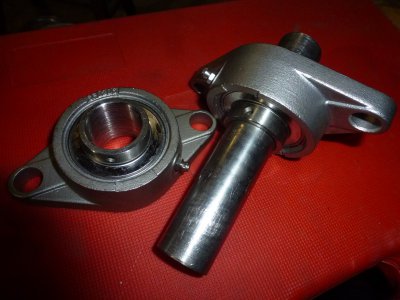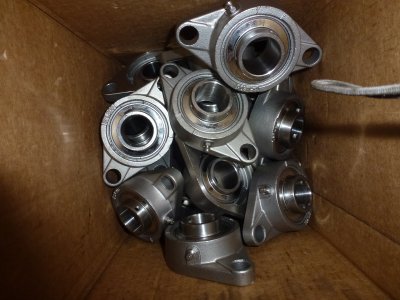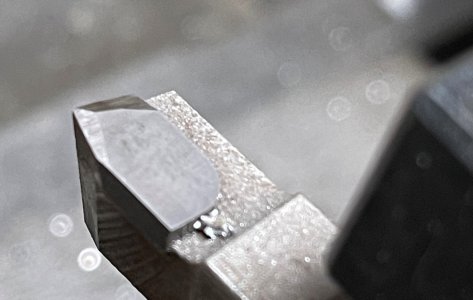- Joined
- Feb 7, 2013
- Messages
- 2,487
There are not a lot of machinists out in this country and I got a call the other day from a fellow
who wanted the ID of 24 bearings machined out to a slip on fit. With some trepidation, I took
on the job. Bearing material is notoriously hard and these bearings had little to hold on to(about 3/8 inch)
to hold in the lathe chuck. I used a carbide triangular carbide in a heavy boring bar. It required a lot
of pressure to get the cutter to cut even with a small surface area on the tool. I ended up using
a piece of cold roll as a go/nogo as trying to machine off a specified amount according to the dials was useless.
Anyway, it's done and I have the rest of the day to do something else.

I did try a grinding stone using a die grinder on the tool post but boring them out with the carbide boring bar was the way to go.
 And there they are, all 24 of them with a slip on fit. The box of bearings weighs about 60 pounds.
And there they are, all 24 of them with a slip on fit. The box of bearings weighs about 60 pounds.
who wanted the ID of 24 bearings machined out to a slip on fit. With some trepidation, I took
on the job. Bearing material is notoriously hard and these bearings had little to hold on to(about 3/8 inch)
to hold in the lathe chuck. I used a carbide triangular carbide in a heavy boring bar. It required a lot
of pressure to get the cutter to cut even with a small surface area on the tool. I ended up using
a piece of cold roll as a go/nogo as trying to machine off a specified amount according to the dials was useless.
Anyway, it's done and I have the rest of the day to do something else.

I did try a grinding stone using a die grinder on the tool post but boring them out with the carbide boring bar was the way to go.
 And there they are, all 24 of them with a slip on fit. The box of bearings weighs about 60 pounds.
And there they are, all 24 of them with a slip on fit. The box of bearings weighs about 60 pounds.



